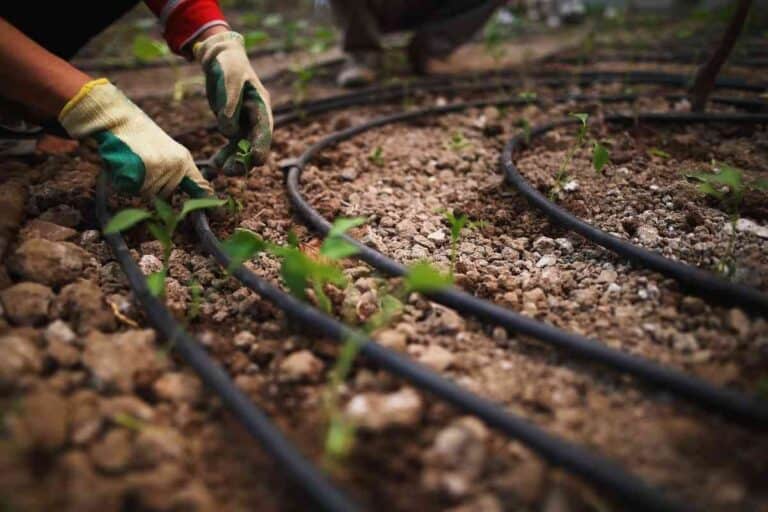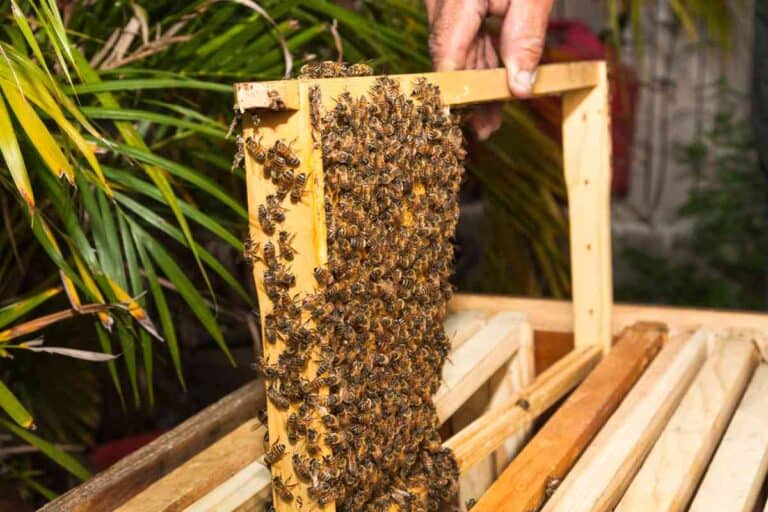Can You Make a Living Farming 5 Acres? Profitable Strategies Revealed!
Embarking on the journey of sustainable living and farming on a modest plot of land is not just a dream but a reality for many dedicated homesteaders and farmers today. Imagine transforming just five acres into a flourishing and profitable farm. It might seem small in the grand world of agriculture, but with the right strategy, this land can become a powerhouse of productivity and sustainability. So, how do you unlock the magic of your five acres?

Related Post! Creative Ways To Make Money On 5 Acres
Can You Make A Living Farming 5 Acres?
You can make a living farming 5 acres by employing strategic approaches such as diversified crop and livestock systems, engaging in direct sales and online markets, accessing grants, and leveraging community support. With meticulous planning and a focus on niche markets, a 5-acre farm can be both sustainable and profitable.
The secret sauce to turning your five-acre dream into a lucrative reality lies in meticulous planning, a deep dive into the nuances of small-scale farming, and an eagerness to tap into niche markets where the big players don’t dominate. Picture this: your small farm thriving by embracing diversity in what you grow and how you sell, proving that big isn’t always better.
Are you ready to explore how your small patch of earth can yield big rewards? Let’s dive into the essentials that make a five-acre farm not just viable but remarkably profitable.
Key Takeaways:
- Diverse farming practices and strategic business moves are your tickets to success on a small farm.
- Direct sales to your community boost your profits by eliminating the middleman.
- High-value crops and niche products are the golden eggs of small-scale farming.
Evaluating the Potential of 5 Acres
Before you sow a single seed, understanding your land’s capacity, the plethora of crop and livestock options, and how your local climate and soil will interact with your farming dreams is crucial.
Understanding Land Capacity
Maximizing your five acres means knowing every nook and cranny of your land. It’s about crafting a master plan that balances crop production, livestock areas, and essential infrastructure in harmony.
Tips for maximizing land capacity:
- Smartly divide your land for different purposes—crops here, animals there, and a barn somewhere in between.
- Embrace vertical farming for crops like microgreens, where the sky (quite literally) is the limit.
Related Post! Creative Ways To Make Money On 10 Acres Of Land
Crop and Livestock Options
The beauty of a small farm is the ability to pick and choose crops and livestock that not only thrive in your space but also bring in a hefty return. From tasty tomatoes and leafy greens to busy bees and clucking chickens, diversity is your farm’s best friend.
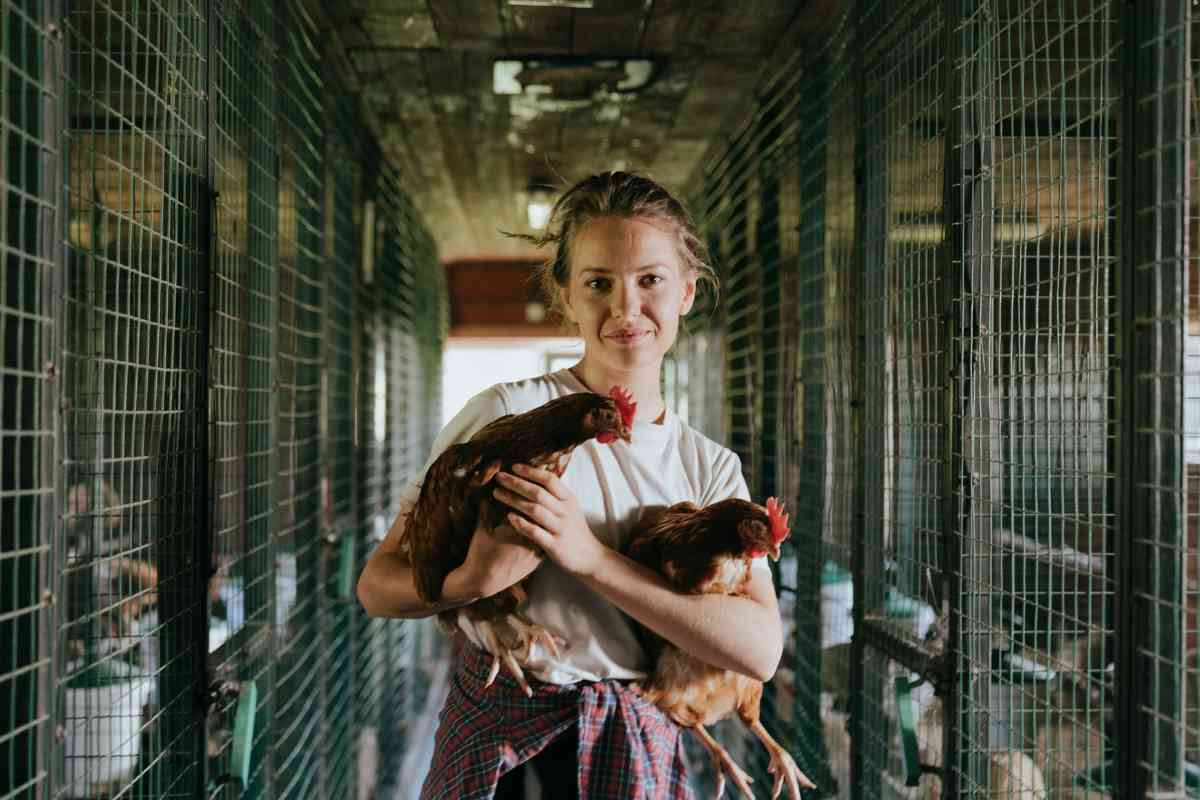
Profitable crop options:
- Herbs and specialty vegetables that demand higher market prices.
- Berries and nuts for those sweet profits.
Popular livestock choices:
- Chickens for a steady supply of eggs and meat.
- Bees for their honey and invaluable pollination services.
Assessing Climate and Soil Conditions
Tailoring your farm to the rhythm of the seasons and the type of soil beneath your feet is paramount. Understanding these environmental factors ensures your farm not only survives but thrives, year after year.
Factors to evaluate:
- The texture and nutrient profile of your soil.
- Local climate patterns, including rainfall, temperature, and frost dates, to guide your farming decisions.
By considering these key aspects of your five-acre farm, you’re not just planning for success; you’re planting the seeds for a future where small-scale doesn’t mean small-time. Are you ready to turn your farming dreams into reality?
Related Post! How To Make Money On 100 Acres Of Land
Starting a Small Farm
When you’re poised on the brink of starting your own small farm, diving into the details with thorough planning is not just beneficial—it’s essential. Imagine weaving the dream of your farm into reality, where every seed planted is a step towards growth, not just in your fields but in your entrepreneurial journey as well.
Drafting a Business Plan
The first step on this journey is to craft a business plan. This document is more than just paperwork; it’s the vision of your farm coming to life on paper. Whether you’re dreaming of a verdant expanse of crops, a chorus of livestock, or a blend of both, your business plan is where you chart out the path to get there. It’s about pinpointing who will be enjoying the fruits (or vegetables, or eggs) of your labor, understanding the pulse of the market, and mapping out the route to connect your farm’s offerings with those who seek them. Think of this plan as your farm’s North Star, guiding you, and potentially persuading investors or lenders that your dream is worth backing.
Financial Planning and Costs
Next up is getting down to the nitty-gritty of financial planning. Here’s where you lay out everything from the ground up—literally. From the cost of the land, be it leased or bought outright, to the nuts and bolts of daily operations. What tools will carve out the future of your farm? What seeds will sprout into profitable produce? Here’s what to consider:
- Land Acquisition: Lease or purchase? Each has its financial implications.
- Equipment Essentials: From tractors to plows, select gear that’s as resilient as your ambition.
- Seeds and Seedlings: Invest in quality to harvest success.
- Soil Amendments: Fertilizer and compost strategies to nurture your land.
- Operational Expenses: Don’t overlook the everyday costs and the hands that help make it all happen.
Explore financing avenues like loans and grants, and create a forecast that lets you visualize your farm’s financial flow.

Securing Equipment and Seeds
Arm yourself with the right tools—literally. The backbone of your farm’s operations lies in the equipment and seeds you choose. Seek out machinery that promises endurance and efficiency. Your seeds and seedlings are the genesis of your farm’s bounty; select them with an eye towards compatibility with your local climate and soil. Vet your suppliers to ensure that your farm’s foundations are as strong as the community you aim to feed.
Related Post! How To Make money On Just 2 Acres Of Land
Seasonal and Soil Strategies
Your blueprint for success should include knowing the perfect planting and harvesting times, understanding the soil’s needs, and envisaging how to scale your operations sustainably. Your small farm is more than a piece of land; it’s a future bustling ecosystem where quality, sustainability, and growth coexist.
Cultivating Crops and Raising Livestock
Transforming a 5-acre farm into a thriving and profitable endeavor is a journey that combines the art of agriculture with the science of strategic planning. It’s about creating a symphony of crop cultivation and livestock rearing, all while ensuring every square inch of your land sings with productivity. Let’s explore how adopting organic farming, integrating crop-livestock systems, harnessing the power of greenhouses, and diving into niche farming can turn your small farm into a beacon of sustainability and success.
Organic Farming Practices
Embrace organic farming to keep your soil rich and your crops healthy without relying on harsh chemicals. Choosing plants that thrive in your local climate and soil minimizes stress and maximizes yield. Techniques like crop rotation and the use of green manures naturally bolster soil fertility, while natural pest control methods ensure your crops grow robustly.
Vegetable Examples:
- Tomatoes and Leafy Greens thrive under organic care, bringing color and vitality to your farm.
Integrated Crop-Livestock Systems
This holistic approach not only enriches your land but also elevates your farm’s efficiency. By allowing your livestock’s manure to fertilize your fields, you create a self-sustaining cycle that cuts down on waste and external inputs. Chickens, for instance, can rejuvenate your pastures and, in turn, contribute to a more fertile ground for your crops.
Greenhouse and Specialty Produce
Incorporating a greenhouse extends your growing season and broadens the range of specialty produce you can cultivate. From aromatic exotic herbs to vibrant heirloom vegetables, a greenhouse offers a controlled environment where diversity flourishes, enabling you to market fresh produce throughout the year.
Specialty Produce:
- Exotic Herbs and Heirloom Vegetables stand out in any market, promising both variety and vitality.
Exploring Niche Farming Opportunities
Niche markets offer unique avenues for profitability on a compact farm. Whether it’s the sweet allure of beekeeping, the artisan appeal of specialty livestock products, or the high demand for medicinal and culinary herbs, specializing allows you to carve out your own corner of the market.
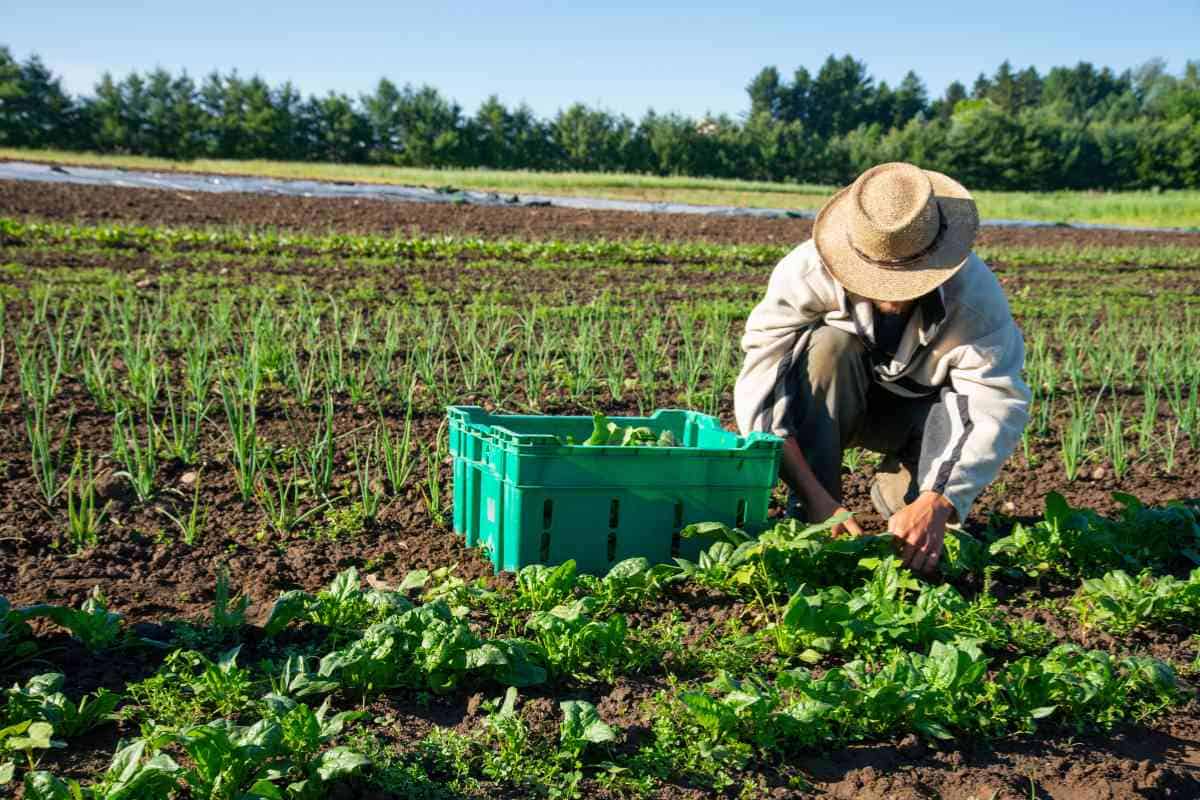
Beekeeping and Honey Production:
- Bees not only enrich your farm’s biodiversity through pollination but also produce honey, beeswax, and royal jelly, tapping into various markets with minimal space requirements.
Specialty Livestock Products:
- Products like goat milk and free-range eggs offer a premium over conventional items, appealing to consumers interested in health benefits and quality.
Growing Medicinal and Culinary Herbs:
- Herbs such as basil, parsley, echinacea, and ginseng are not only versatile in their use but also profitable, especially when processed and packaged for retail.
By focusing on these tailored approaches, your 5-acre farm can achieve remarkable efficiency and profitability. Organic practices, integrated systems, greenhouse cultivation, and niche market exploration are not just strategies; they’re your stepping stones to creating a farm that’s as sustainable as it is successful. In this journey, every choice you make is an opportunity to showcase the value of local, thoughtful, and innovative farming.
Selling Produce and Products
Embarking on the journey of farming just 5 acres can lead to a flourishing enterprise with the right mix of smart selling strategies and diverse sales channels. Establishing a robust online presence and fostering direct connections within your community can significantly enhance your farm’s visibility and profitability. Let’s delve into how you can effectively market your produce, engage with your community, and thoughtfully scale your operations for long-term success.
Marketing Strategies for Small-Scale Farms
Creating a compelling brand for your farm is key to standing out. Here are strategies to captivate and connect with your community:
- Target Market: Identify consumers who value the freshness and local origin of their food.
- Education: Share the importance of supporting local farms and the benefits it brings to the environment and community health.
- Direct Relationships: Forge partnerships with local businesses like family-owned stores and restaurants to ensure a consistent demand for your products.
- Farm Events: Host gatherings to build loyalty and encourage word-of-mouth promotion.
Community Supported Agriculture (CSA)
Launching a CSA program can be a game-changer, offering stability and upfront capital while deeply connecting with your community:
- Subscriptions: Members pay in advance for a season’s worth of produce, ensuring you have funds when needed most.
- Regular Deliveries: Provide a steady supply of fresh produce, fostering a sense of anticipation and belonging among members.
Online Sales and Local Markets
Expanding your sales channels can dramatically increase your farm’s reach and revenue:
- Online Marketplaces: Utilize platforms tailored to artisanal goods and local produce to tap into a broader market.
- Farmers Markets: Engage directly with customers, offering them the freshest picks and personal insights into your farming practices.
Scaling and Expansion Considerations
As your farm begins to flourish, thoughtful consideration of how to scale sustainably is paramount:
Diversifying Farm Revenue Streams
- Explore varied products like specialty vegetables or integrate livestock management for comprehensive land use and diversified income.
Balancing Growth with Sustainability
- Implement water conservation practices and crop rotation to ensure your expansion does not come at the environment’s expense.
Investing in Farm Infrastructure
- Invest in storage facilities and efficient machinery to boost productivity and extend your products’ market life.
Navigating Legal and Regulatory Challenges
Understanding the legal landscape is crucial for the smooth operation of your farm:
- Agricultural Regulations: Stay informed about laws affecting farming practices to ensure food safety and environmental stewardship.
- Permits and Licenses: Secure all necessary documentation before commencing farming activities, consulting local agriculture offices or the USDA for guidance.
- Zoning and Environmental Laws: Ensure your farm complies with land use and environmental regulations to sustainably manage your resources and avoid legal pitfalls.
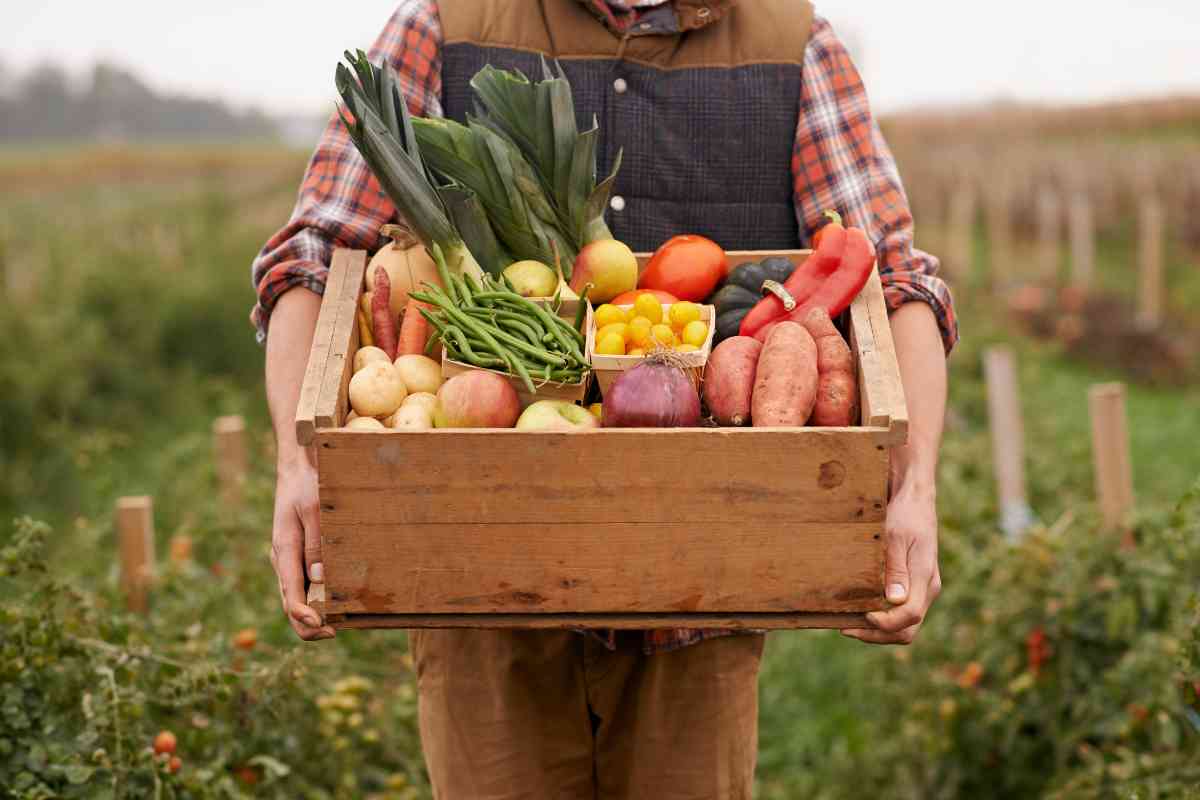
Utilizing Resources and Support Networks
Turning a 5-acre farm into a sustainable and profitable venture is a multifaceted endeavor that requires more than just hard work and dedication to the land. It necessitates an active engagement with your community, a strategic approach to leveraging available resources, and building robust business relationships. Here’s how you can enrich your farming journey with the support of community groups, grants, and local businesses.
Engaging with Agriculture Community Groups
Being part of an agricultural community group can be incredibly rewarding. In places like New Hampshire, these groups offer a wealth of opportunities for learning and connection:
- Workshops and Field Days: Participate in events to learn new farming techniques and share experiences.
- Peer Support: Engage with fellow farmers to exchange insights and foster a supportive network.
- Continuous Learning: Stay up-to-date with the latest in sustainable farming practices and innovations.
Accessing Government Resources and Grants
The United States Department of Agriculture (USDA) is a treasure trove of resources for small-scale farmers. By tapping into these resources, you can lighten the financial load and inject your farm with growth potential:
- Conservation Grants: Enhance your land’s sustainability and productivity.
- Value-Added Producer Grants: Boost your marketing initiatives and increase profitability.
- Renewable Energy Initiatives: Invest in sustainable energy solutions for a greener farm.
Exploring these grants can provide you with the financial backing necessary to explore new ventures and solidify your farm’s foundation.
Building Relationships with Local Businesses
Creating partnerships with local businesses is crucial for establishing a reliable market for your produce. Restaurants, grocery stores, and educational institutions are continuously on the lookout for high-quality, locally-sourced foods:
- Introduce Your Farm: Make your presence known to potential business partners.
- Negotiate Fairly: Work towards agreements that are beneficial for both parties.
- Ensure Consistency: Deliver quality produce in a timely manner to build trust and dependability.
These connections not only secure your farm’s income but also strengthen the local food system, promoting sustainability and community health.
Cultivating a Community-Focused Farm
By engaging with agricultural groups, utilizing government resources, and building meaningful local business relationships, your farm becomes more than just a source of income. It evolves into a vital part of the community, contributing to the sustainability and resilience of local food systems. Remember, the journey of small-scale farming is enriched not just by the crops you grow or the livestock you raise, but by the connections you forge and the impact you make on your community and the environment.


